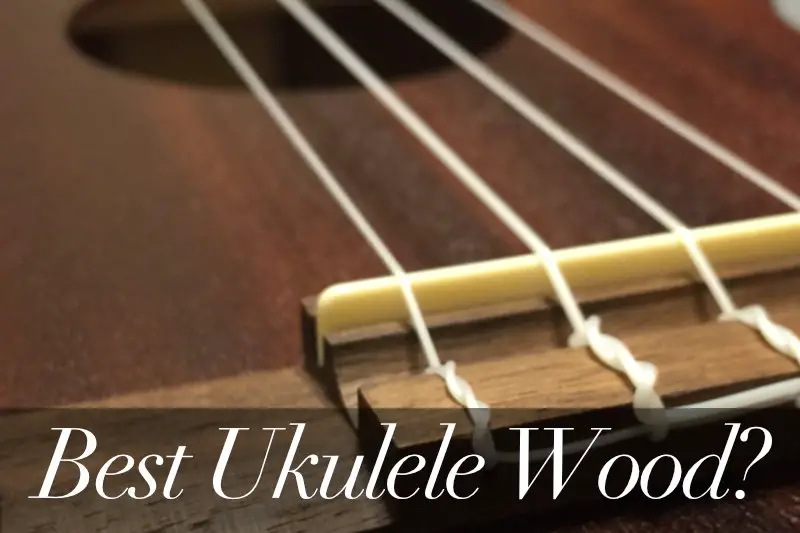What is a tambourine…that jingly thing that people shake around in old 60s videos. Well, it’s actually a diverse and highly respected percussion instrument that spans nearly all genres of music. You might think there wouldn’t be much to say about this humble instrument, but give us a chance, and we’ll show you there’s so much more to it than meets the eye!
The tambourine is used all throughout indie folk and other forms of Americana and folk music in general. You can still find them at music festivals everywhere, every year. Let’s look at why it’s become so popular.
We want to talk all about the history of the tambourine, and its place in the percussion family. Then, we’ll show you some cool techniques you can break out next time you’re handed one at a basement show.
Some of the articles on our site contain affiliate links. We're careful about what we review and recommend. As an Amazon Associate, we may earn something small from qualifying purchases. Thanks for the support!
The history of the tambourine
Its rich history begins in folk music and religious rituals. Like other members of the percussion family, especially drums, it’s a versatile instrument that has been carried along trade routes through the ages.
The tambourine’s history began in Mesopotamia, in modern-day Iraq, Kuwait, Egypt, and other countries bordering the Mediterranean Sea. Goddess cults used tambourines in worship, and the majority of musicians were female. Readings of the Quran are often accompanied by tambourines.
Like many other instruments, the tambourine moved from culture to culture through trade, and it can be difficult to track the journey. Everywhere it went, it was an instant hit.
Britannica has a lot of great information on the history of the tambourine, including how Rimsky-Korsakov and other orchestral arrangers brought it into the 19th century’s musical zeitgeist. Check out their page for a little closer look.
Is it a percussion instrument?
With all of that to think about, you might start to wonder how to classify the tambourine. Is it a percussion instrument?
It is technically a member of the percussion family because it is played by striking it. The tambourine is technically a frame drum, as concert tambourines are made of a head stretched around a frame. It’s played by striking it with the hands, producing a percussive sound from the jingles as well.
Many tambourines today don’t have heads at all, but plastic frame tambourines are just as fun to play when you’re in the percussion section.
What are the different types
We mentioned the concert tambourine and the headless version, but is that it? After all, how many varieties could there be? Here’s a list of all of the variations and their anatomies. There are more than you’d think!
Single-row tambourine
A single-row tambourine is characterized by having one line of jingles or zills along the frame. Each zill is paired up, but there is only one row running across. It can have a drum head or be headless. Check out this musician demonstrating some moves on a single-row tambourine. This type has a very clean, precise sound, so you’re able to easily hear the rhythm he’s creating.
Double-row tambourine
A double-row tambourine has the same paired-up zills but has two rows of them running across the frame. Here’s someone demonstrating one in the warehouse of my go-to percussion store, Steve Weiss Music. Double-row tambourines are louder and more imprecise, which is why the musician chose to demonstrate using the three-finger technique.
Concert tambourine
Concert tambourines can be either single or double-row, but they are characterized by having a drum head made of either animal skin or synthetic skin. Calfskin is traditional, but goat skin is becoming more common. They have a better sound, but they won’t hold up to temperature and humidity changes as well as a synthetic head.
Concert tambourines have a beautiful sound and can be endlessly versatile to a skilled player.
Headless tambourine
Headless tambourines are what you’re probably used to using in the studio or seeing at shows. They can have a wooden or plastic frame, be single or double-rowed, or be shaped in the classic circle or a crescent, which we’ll talk about next.
Crescent tambourine
Crescent tambourines have a reputation for being the bad boys of the tambourine world since they’re what drumset players usually screw onto the frames of their drum kits. They are also very easy to hold since they have a handle. They’re versatile, cheap, and highly effective.
How to play the tambourine
Playing this instrument is, in theory, super simple. Just smack it against your palm, and you’ve played a quarter note. Right? Here’s an example of an easy playing technique.
- Hold the tambourine in your non-dominant hand
- Strike it with the four fingers of your dominant hand
You can play quarter notes or eighth notes with this technique pretty easily. If you want sixteenth notes, you’ll need to get your shake on.
- Move the tambourine towards and away from your dominant hand, shaking it by hinging your wrist
- Strike it on the notes you want to accent
- You can also strike it against your thigh
If you need to get a little more technical, here’s how to play more complicated rhythms.
- Hold the tambourine steady with your non-dominant hand.
- With your dominant hand, pinch your thumb, index, and middle finger together.
- Tap out a rhythm on the tambourine’s frame using your three fingers.
It’s easy to get a beat going with all of these techniques. There are lots of YouTube videos out there on various techniques. Start this great Vic Firth video at the 0:50 minute mark for some awesome instruction on how to hold and play a tambourine.
How to do a thumb roll
One of my favorite techniques to use is a thumb roll. It’s tricky to get right away, but if you keep at it, you’ll be thumb-rolling with the best of them. Here’s the easiest way to do a thumb roll on the tambourine.
To do a thumb roll on the tambourine, slide your thumb along the drum head or frame. Hold the tambourine lightly, and roll upwards along the frame. Keep an upward bend in your knuckle, and roll on the lower pad of your thumb. It helps to wet your thumb first or use beeswax on the tambourine for friction.
Some professionals recommend beeswax or even surfboard wax. I’ve had a lot of luck, actually, by scraping my thumb along the edge of my front teeth a few times first. If you’re using a school instrument, you’ll probably want to wash your hands.
Here’s an awesome video from Neil Grover himself. The upload quality isn’t the best, but Grover’s advice is spot-on – and just happens to corroborate my own tips!
FAQs
Here are some frequently asked questions about the tambourine.
Is it hard to play the tambourine?
Playing the tambourine can be easy and fun, but players need to have a firm grasp of rhythm since their playing will cut through the rest of the group.
It’s an easy instrument to pick up and play, but like most simple things can be difficult to master.
What are zills on a tambourine?
Zills are the name for the little jingles on a tambourine. They’re also another name for finger cymbals.
What is a tambourine: Final thoughts
Did you realize there was so much to know about the mighty tambourine? It’s an easy instrument to play, so it’s often given to the beginner percussionist. Unfortunately, teachers and directors don’t spend nearly enough time making sure their students know the power they hold in their hands.
A tambourine can be a super simple, fun instrument to get learning about rhythm and just have a great time with music.
Which type do you have in the studio? Do you play the ever-popular crescent tambourine when you record, or are you lucky enough to have a beautiful concert tambourine at home? Let us know in the comments what you play on!




